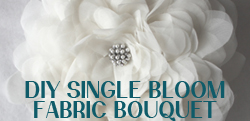
Have you wondered how Joey's Mom developed her love of photography? We find out below!
If you've missed any of our Joey's Mom series, see them all here and click through the photos to see more and to read the original versions of her stories.

This could just as well have been captioned "Our Wedding Night or How a Bad Photo Resulted in a Lifetime Hobby!"
Jerry's German camera turned out maddeningly random good or bad photos. Of course it was because we didn't know about setting it for distance, let alone shutter speed and f-stop. We posed this morning after our wedding in front of the hotel where we spent the first night of our married life. The picture turned out so badly I was motivated later to take the camera back to a store to learn how to operate it and was sold a light meter. The rest is history: the beginning of better photos and a lifetime hobby.
(Read a very classy and humorous story about the wedding night here!)

Mom's First Darkroom
My darkroom quickly evolved from a temporary enamel-topped table setup to a real counter 10 feet long with black inlaid-linoleum top. Black-lined drawers held photo paper. Cupboards above kept chemicals neat. The counter was built at desk height so that I could sit while printing. Jerry did it all. A stenographer's chair allowed me to scoot from printer or enlarger to tray to tray to tray. Jerry was teaching himself woodworking as I was learning photography. Since I didn't notice anyone teaching him, maybe he was holding a book in one hand while sawing with the other! However he did it, he became an expert and the doctor didn't mind having nice cupboards built into his back room.
I painted the room a dark rosy red and made traverse draperies of black to cover the one window. It was a warm womb for long Saturday afternoons with the Met playing softly on the radio. I totally lost track of time with the birthing of amazing black-and-white photos. Each was a miracle, over and over again. I'm as fascinated with them today as I was 56 years ago.
The 4x5 I am pulling out of the fixer in the photo above showing a gal in her black bra, was Rose Bottegal, the wife of Jerry's Army buddy Aldo. He and Rose visited us in 1949, and while on the water in a rowboat on a steaming day, Rose shed her blouse. Wearing just her bra, she said "Just make believe this is a swimming suit top."
The doctor loaned me his Argoflex until I purchased my own camera. An artist himself, he painted in watercolors and oils at an easel in his wife's sunroom. So he followed my development in photography with interest.
Here the doctor edits 16mm film he shot on an extended summer vacation driving from Michigan to the West Coast with his family on Eisenhower's emerging interstate highway system. Of course they visited Yellowstone Park.

Camera store personnel in the 1940s were photographers. A customer could expect to have a serious conversation with a salesperson regarding any of the products offered from film to cameras of any price, lenses, enlargers, developing chemicals, floodlights, tripods, anything they sold. They could discuss technique and their advice was solid; they lived and breathed photography. A store was apt to have an old hobbyist or two passing time, entering conversations between clerk and customer, and offering advice as well, usually good!
The owner of Fuson's store had been a well-known portraitist, teaching his skills to his daughter who then probably surpassed him. He introduced her to me in his store one day as he explained the different surface textures of photographic papers, the tones, the contrast numbers, et cetera.
Evelyn added her own take on certain papers, we chatted and eventually she told me about a new camera club she was forming, to be for serious hobbyists. I was interested and became part of the group which we democratically voted to name the "Camera Art Club." The club was to provide a great deal of help and inspiration to this budding photographer. Evelyn especially was generous about sharing her knowledge. She demonstrated how to take a portrait if only one photoflood was available. I went home and posed Jerry. This photo, taken in 1949 became one of my favorites of him.

I invited the Camera Art Club to Hickory Hill, my parents' farm, in August 1950. It was no longer a working farm, but the photographers fanned out and found interesting possibilities in my childhood swing, old farm machinery, and rustic fencing. My mom and dad were gracious but unobtrusive, and no one suggested they do an American Gothic pose. The day was overcast and without sparkle, not consistent with our usual luck in the weather.
The darling Chicago model was only 13 years old (so says my 56-year-old pencil jotting on the back of the print).

The Camera Art Club hired Jerry and paid him the standard modeling fee of $25 for an evening's work. He was cooperative and seemed to enjoy the group -- and they him. This is the photo I took that night in 1950.












Could there BE a more amazing, intriguing and fascinating couple? Joey is so lucky to have them as parents. I love the story about their wedding night. It reminds me of the honeymoon scene in "Coalminer's Daughter" with Loretty.
ReplyDeletejamie--are we related to Joey's mom? :) The fact that she was shown the dark room and then was in business with her own stuff within 12 hours is SO us! lol
ReplyDeleteGreat pics, love that last one of Jerry!